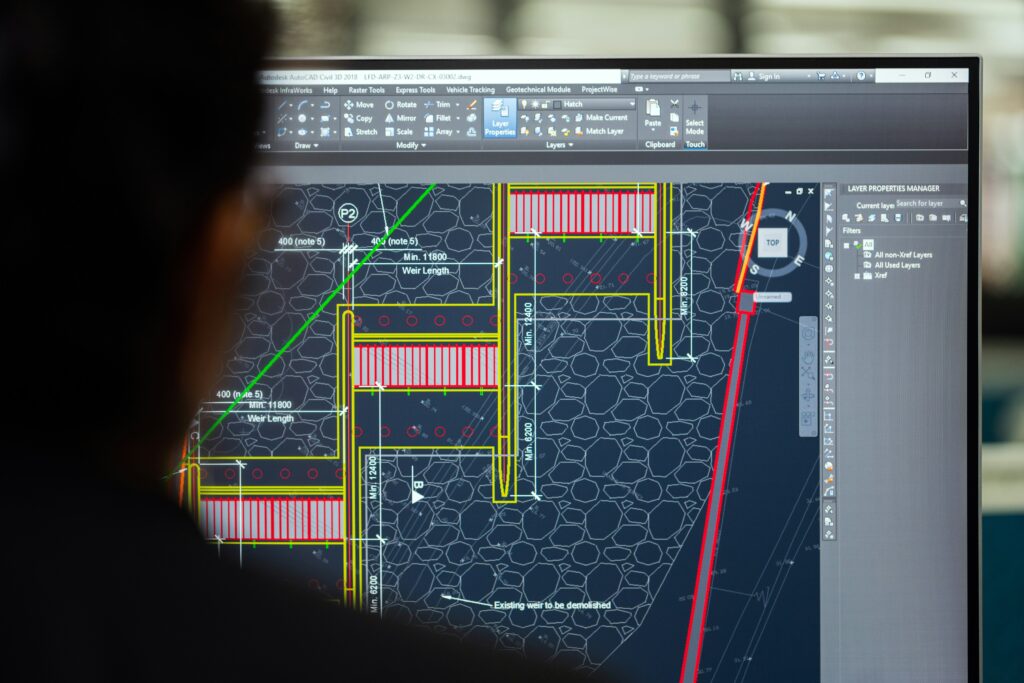The Critical Need for Change Management

The Critical Need for Establishing a Change Management Program for CRM and AI Initiatives Ensuring Successful Implementation and Maximizing Benefits In today’s rapidly evolving business landscape, the implementation of new technologies such as Customer Relationship Management (CRM) systems and Artificial Intelligence (AI) initiatives is essential for maintaining competitiveness and driving growth. However, the successful integration of these systems hinges on one key element: change management. Without a well-defined change management program, organizations risk low user adoption, resistance, and ultimately failure to realize the full potential of their investments. Why Change Management is Critical Change management is the structured approach to transitioning individuals, teams, and organizations from a current state to a desired future state. In the context of CRM and AI implementation, it ensures that users embrace and utilize the new systems effectively, thereby maximizing their benefits. A robust change management plan helps organizations adapt their workflows, increase user adoption, and achieve their desired business outcomes. Key Aspects of Change Management in CRM Implementation Define the Change Vision and Goals Clearly articulate the purpose and benefits of the CRM implementation. This helps employees understand why the change is happening and what they can expect. Align the change vision with the overall business strategy and customer value proposition. This ensures that the CRM implementation supports the organization’s goals. Define specific goals and objectives for the CRM implementation to provide a framework for tracking progress and measuring success. Build an Implementation Team and Gather Support Assemble a dedicated implementation team with representatives from key departments to ensure that all perspectives are considered and that the team has the necessary expertise. Engage leadership and build support for the change, as upper management’s endorsement can significantly influence employee acceptance. Consider creating a “champion” program which involves empowering select employees to be advocates for the CRM and to support their colleagues. Develop a Communication Plan Communicate the change clearly and frequently. Keep employees informed about the progress of the implementation, potential challenges, and how the new CRM will impact their work. Use a variety of communication channels to reach different audiences, including email, meetings, internal newsletters, and presentations. Address concerns and resistance proactively by providing opportunities for employees to ask questions and offer feedback. Provide User Training and Enablement Offer comprehensive training on how to use the new CRM system, including classroom-based instruction, online tutorials, and one-on-one coaching. Provide ongoing support and resources for users such as FAQs, documentation, and help desk support. Encourage users to experiment with the CRM and to find ways to make it work for them, fostering a sense of ownership and engagement. Address Resistance Proactively Identify potential sources of resistance, which could include concerns about job security, workflow changes, or lack of trust in the change initiative. Address resistance head-on by providing clear and concise explanations of why the change is happening and how it will benefit employees. Offer support and resources to help employees overcome their resistance, including mentorship, training, and opportunities to provide feedback. Monitor Progress and Evaluate the Change Track key metrics to measure the success of the CRM implementation, such as user adoption rates, data quality, and business outcomes. Gather feedback from users and other stakeholders to identify areas for improvement and refine the change management plan. Be prepared to adapt the change management plan as needed, as the CRM implementation is a dynamic process that requires flexibility and responsiveness. The Role of AI in Enhancing CRM Implementing AI initiatives alongside CRM systems can further enhance the capabilities and effectiveness of the organization. AI can provide advanced analytics, automate routine tasks, and offer predictive insights, thereby augmenting the CRM’s functionality. However, integrating AI requires careful change management to ensure that users are comfortable with and trained in utilizing AI tools. Conclusion The implementation of new CRM systems and AI initiatives presents significant opportunities for organizations to improve their operations and customer relationships. However, the success of these implementations depends heavily on effective change management. By establishing a comprehensive change management program, organizations can ensure smooth transitions, high user adoption, and the realization of their desired business outcomes. Embracing change management is not only crucial but also a strategic imperative for any organization seeking to leverage the full potential of CRM and AI technologies. About Growthline Partners Growthline Partners specializes in assisting B2B companies implement the automated process and technology that frees up sales reps to invest their time and energy into other business development priorities, while efficiently tracking a lead’s level of engagement. For over 10 years Growthline Partners has assisted companies design, customize and implement their technology platforms and stacks based on Zoho or Salesforce software to turn them into high performance platforms that support their revenue acceleration and customer service strategies and initiatives. About the Author William Pickett is the Managing Director at Growthline Partners. He is a veteran of the technology and consulting industry and has held senior technology and management positions including Group Manager at AT&T Government Solutions and Senior Manager at Cap Gemini Ernst & Young. William has extensive knowledge of Salesforce & Zoho software and experience working with the financial, manufacturing and non-profit sectors.
You Don’t Have to Throw Away Your Existing MRP/ERP System for Digital Transformation

You Don’t Have to Throwaway Your Existing ERP/MRP System for Digital Transformation Digital Sales & Marketing Does not Require a New ERP/MRP System In today’s highly competitive market, implementing a new digital front-end CRM and marketing software can revolutionize your business operations. But you have already invested time and money with your existing ERP/MRP/logistics system such as SAP, Acumatica or Infor…correct? At Growthline Partners, we understand the transformative power of advanced CRM solutions and how they can drive success for manufacturers and distributors, but they are just one piece of the technology puzzle. By integrating a new, state-of-the-art CRM system, you can not only increase sales, marketing capabilities, and employee productivity but also enhance and elongate the ROI of industry-specific software such as MRP, ERP, and supply chain/logistics software. Boost Sales and Marketing Capabilities A robust CRM system streamlines the sales process by providing a comprehensive view of customer interactions, enabling sales teams to track leads, manage opportunities, and close deals efficiently. With advanced marketing automation tools, you can create personalized campaigns, track engagement, and analyze performance, ensuring that your marketing efforts are targeted and effective. The result is a significant increase in sales and enhanced marketing capabilities that drive business growth. But the real value is derived when you integrate the existing customer product and purchasing information from your ERP/MRP system with your new digital front-end Improve Employee Productivity Implementing a digital front end CRM fosters collaboration and efficiency among employees. By centralizing customer data and automating routine tasks, staff can focus on strategic activities that add value to the business. The system also provides real-time insights and analytics, derived from data stored in your ERP/MRP system, empowering employees to make data-driven decisions. This leads to improved productivity, better customer service, and ultimately, higher satisfaction levels. Enhance ROI with Integration When integrated correctly, a CRM system can enhance the ROI of your existing industry-specific software. For manufacturers and distributors, this means leveraging the power of MRP, ERP, and supply chain/logistics software. By creating a seamless flow of information between these systems, you can optimize operations, reduce costs, and improve overall efficiency. Integration ensures that your investment in specialized software yields long-term benefits and a higher return on investment. Steps to Successfully Integrate a New Digital Sales and Marketing System with a Legacy MRP/ERP System Implementing a new CRM system and integrating it with your legacy MRP/ERP system can revolutionize your business operations. To ensure a smooth and successful integration, consider the following essential steps: 1. Conduct a Thorough Needs Assessment Begin by evaluating your current systems and identifying the specific needs of your business. Understand the pain points and limitations of your existing MRP/ERP system and define the objectives you aim to achieve with the new CRM integration. This assessment will guide your selection of the CRM system that best aligns with your business goals. 2. Choose the Right CRM Solution Select a CRM system that offers compatibility with your existing MRP/ERP software. Look for features such as robust APIs, customizable modules, and support for data integration. Solutions like Zoho CRM Plus or Zoho One are designed to seamlessly integrate with various industry-specific systems, making them ideal choices for manufacturers and distributors. 3. Develop a Comprehensive Integration Plan Create a detailed integration plan that outlines the steps, timeline, and resources required for the project. Include milestones, data migration strategies, and a risk management plan. Establish clear communication channels among all stakeholders to ensure alignment and address any potential challenges promptly. 4. Data Mapping and Cleansing Map out the data fields between your CRM and MRP/ERP systems. Identify any discrepancies and ensure that data formats are compatible. Perform data cleansing to eliminate duplicates, errors, and outdated information. Accurate data mapping and cleansing are crucial for maintaining data integrity and consistency during the integration process. 5. Implement Integration of Middleware Use integration middleware or connectors to facilitate the seamless exchange of data between your CRM and MRP/ERP systems. Middleware acts as a bridge, enabling real-time synchronization and communication between the two platforms. Ensure that the middleware is properly configured and tested before full-scale implementation. 6. Test Extensively Conduct thorough testing of the integrated systems in a controlled environment. Validate that data is accurately transferred and that all functionalities work as expected. Address any issues or bugs that arise during testing to ensure a smooth transition during the go-live phase. 7. Train Your Team Provide comprehensive training to your employees on the new CRM system and its integration with the MRP/ERP software. Ensure that they understand how to use the integrated features effectively and are aware of the benefits. Well-trained staff will be more confident and efficient in leveraging the new system. 8. Monitor and Optimize After the integration is live, continuously monitor the performance of the integrated systems. Collect feedback from users and identify areas for improvement. Regularly update and optimize the integration to adapt to changing business needs and technological advancements. By following these steps, you can successfully integrate a new CRM system with your legacy MRP/ERP system, enhancing operational efficiency, data accuracy, and overall business performance. Why Consider Zoho CRM Plus or Zoho One as Your Digital Front-End? Zoho CRM Plus and Zoho One offer cost-effective, state-of-the-art digital front-end solutions that leverage your company’s ERP and MRP systems. These platforms provide an all-in-one suite of applications designed to manage sales, marketing, customer support, and more. With Zoho CRM Plus or Zoho One, you get a comprehensive, scalable solution that grows with your business, adapts to your needs and can be integrated with your existing MRP/ERP software. Growthline Partners: Your Zoho Experts As a trusted Zoho partner, Growthline Partners specializes in implementing, integrating, and customizing Zoho software for manufacturers and distributors. Our certified team of experts works closely with clients to understand their unique requirements and deliver tailored solutions that drive success. Whether you’re looking to streamline operations, enhance customer relationships, or boost productivity, Growthline Partners has the expertise to help you achieve your goals. Visit Zoho Services
How to Conduct a Technology Stack Audit for Sales and Marketing

A guide for evaluating the current state and performance of your sales and marketing technology stack. What is a sales and marketing technology stack? Technology Stack Audit is the best way to understand your sales and marketing technology stack. The set of software, hardware, and tools that you use to plan, execute, and measure your sales and marketing activities. A sales and marketing technology stack can help you generate leads, nurture prospects, close deals, retain customers, and grow your business. A sales and marketing technology stack includes several types of software. For instance, these may encompass: Customer relationship management (CRM) software, which helps you manage your interactions with existing and potential customers Email marketing software, which helps you create, send, and track email campaigns Content marketing software, which helps you create, distribute, and optimize content for your target audience Social media marketing software, which helps you manage your presence and engagement on social media platforms Search engine optimization (SEO) software, which helps you improve your visibility and ranking on search engines Web analytics software, which helps you measure and analyze your website traffic and performance Landing page software, which helps you create and test landing pages that convert visitors into leads Lead generation software, which helps you capture and qualify leads from various sources Lead nurturing software, which helps you automate and personalize your communication with leads Lead scoring software, which helps you assign a numerical value to each lead based on their level of interest and readiness to buy Sales automation software, which helps you streamline and automate your sales processes and tasks Sales intelligence software, which helps you gather and analyze data and insights on your prospects and customers Why do you need a technology stack audit for sales and marketing? A technology stack audit for sales and marketing can provide you with several benefits, such as: Ensuring that your sales and marketing technology stack is aligned with your sales and marketing goals and strategies Improving the efficiency, effectiveness, and integration of your sales and marketing technology stack Reducing the costs, complexity, and redundancy of your sales and marketing technology stack Enhancing the collaboration, coordination, and alignment of your sales and marketing teams Preparing your sales and marketing technology stack for future growth, changes, or challenges How to conduct a technology stack audit for sales and marketing? A technology stack audit for sales and marketing can be conducted in diverse ways, depending on the scope, objectives, and resources of your project. However, a general framework for a technology stack audit for sales and marketing can consist of the following steps: Define the scope and objectives. What are the main questions or problems that you want to address? What are the expected outcomes or deliverables of your audit? What criteria or metrics will you use to evaluate your sales and marketing technology stack? Gather the information and documentation of your sales and marketing technology stack. What is the software, hardware, and tools that you use for your sales and marketing activities? How are they connected and integrated? How do they function and interact? What are the specifications, features, and limitations of each software? What are the costs, benefits, and risks of each software? Analyze and evaluate your sales and marketing technology stack How well does your sales and marketing technology stack meet your sales and marketing goals and strategies? How well does your sales and marketing technology stack perform, in terms of efficiency, effectiveness, and integration? How well does your sales and marketing technology stack support your sales and marketing teams, in terms of collaboration, coordination, and alignment? How well does your sales and marketing technology stack compared to the industry standards and best practices? What are the strengths and weaknesses of your sales and marketing technology stack? What are the opportunities and threats for your sales and marketing technology stack? Recommend and prioritize actions for improvement. Based on your analysis and evaluation, what are the areas or aspects of your sales and marketing technology stack that need improvement, optimization, or replacement? What are the viable solutions or alternatives for each area or aspect? What are the pros and cons of each solution or alternative? How feasible, effective, and impactful is each solution or alternative? How urgent, important, and aligned are each solution or alternative with your sales and marketing goals and strategies? Based on these criteria, what are the recommended and prioritized actions for improvement? Implement and monitor the actions for improvement. How will you execute the actions for improvement? What are the resources, timelines, and milestones for each action? What are the roles and responsibilities of each stakeholder involved in each action? How will you communicate and coordinate the actions for improvement? How will you measure and report the progress and results of each action? How will you ensure the quality and sustainability of each action By conducting a technology stack audit, you can ensure that your sales and marketing technology stack is aligned, efficient, effective, and integrated, and that it supports your sales and marketing goals and strategies. Many companies can accomplish this task themselves, by using internal resources and expertise. However, if you feel that you do not have the resources or expertise to conduct a thorough and objective technology stack audit, you can seek external help from a professional service provider. Growthline Partners is a leading consultancy firm that specializes in sales and marketing technology stack audits. We have the skilled resources and expertise to help you assess, optimize, and transform your sales and marketing technology stack, and to help you achieve your desired outcomes and results. If you are interested in learning more about our services, please contact us today and we will be happy to assist you with your technology stack audit needs. Book a Consultation About Growthline Partners Growthline Partners specializes in assisting B2B companies implement the automated process and technology that frees up sales reps to invest their time and energy into other business development priorities, while efficiently tracking
Project-based Businesses Have Unique Challenges

Project-Based Businesses Have Unique Challenges What is Your Unique Challenge? Running a project-based business has its own challenges and most business systems are not built to solve your problems. That’s why an end-to-end platform that can integrate your marketing and sales, project management, ERP, and HR functions, which can provide you with real-time visibility and insights into your performance can be a key business attribute. A platform that can streamline your workflows, automate your tasks, and improve your collaboration and communication can help you grow your business and increase your profitability. Growthline leverages Zoho One for these functionalities 1. Capture and nurture leads, create quotes and proposals, and automatically create a project plan for an opportunity based on the completion of a specific sales stage. 2. Plan and manage your projects, track your progress and milestones, and collaborate with your team and clients with Zoho Projects. Incorporate your clients and or vendors into the project via a portal. 3. Track your capital goods (COGS), hours and expenses against the project, invoice your customers, and monitor your cash flow and profitability with Zoho Finance Plus (Books.) 4. Manage your human resources, payroll, benefits, and compliance with Zoho People and Zoho Payroll. And much more, If you are an ETO (Engineered-to-Order) project-based manufacturer or a building material distributor who also installs and services your products, you know how challenging it is to manage all the aspects of your business. From generating leads and closing deals, to planning and executing projects, to tracking costs and revenues against the project, to managing your employees and contractors, you have a lot of moving parts to keep track of. Zoho One is a flexable solution It can be configured to incorporate and integrate both project management and project accounting and show you the profitability or loss of an individual project or a portfolio of projects. With Zoho One, you can make data-driven decisions and optimize your operations. With Zoho’s other applications for analytics, document management, marketing automation, social media, chat, video conferencing, and more. Zoho One & Microsoft 365 Integrate Zoho One with Microsoft 365’s suite of applications including teams and copilot and integrate your legacy MRP systems data into Zoho One However, implementing and customizing Zoho One for your project-based business can be a complex and time-consuming process. You may not have the expertise, resources, or time to configure and customize the software to fit your specific needs and goals. That’s where Growthline Partners can help. Zoho App Details Zoho One Solutions Zoho Solutions Finance Plus Zoho Solutions CRM Plus Zoho Solutions People Plus Zoho Solutions Development Tools Zoho Solutions E-commerce See our Insights Growthline Partners is a consulting company that specializes in implementing Zoho One software for project-based manufacturers and building material distributors. We have the experience and knowledge to configure, customize and integrate Zoho One’s modules to provide an end-to-end solution for your project-based business. We have developed custom modules and components using Zoho creator to address specific sales order, purchase order, supply chain and Zoho finance (Books) requirements and can help you set up and integrate the Zoho apps, train your staff, and support you throughout your journey. If you are interested in learning more about Zoho One and how Growthline Partners can help you implement it, please visit our website at www.growthlinellc.com or contact us today. We would love to hear from you and discuss your needs and challenges.
